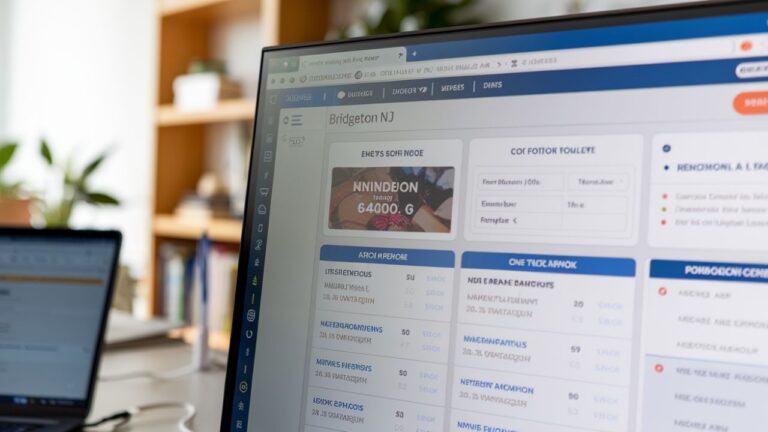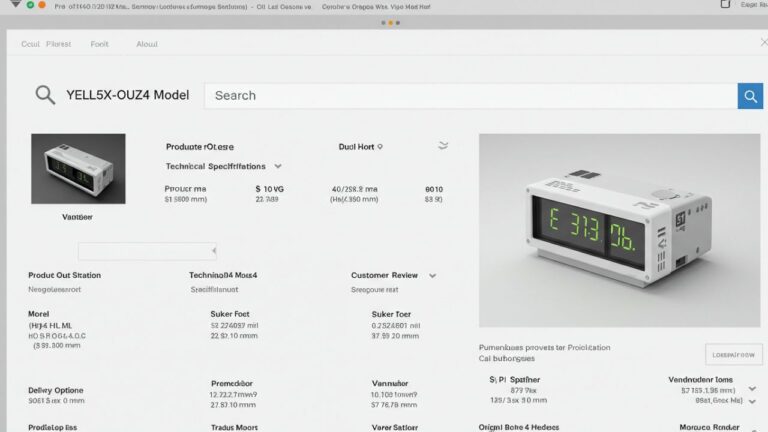
Choice Boards for Language Arts
Introduction: What Are Choice Boards for Language Arts?
Teachers constantly search for effective strategies to increase engagement in English Language Arts. Choice boards for language arts offer an innovative solution. These versatile tools provide students with various options for demonstrating understanding and creativity. By offering structured choices, educators empower learners to take ownership of their work. Moreover, choice boards align with learning goals while supporting different learning styles. Students feel more motivated when they can select assignments that match their interests. Therefore, incorporating choice boards into language arts instruction creates a more inclusive and engaging learning environment.
Understanding the Purpose Behind Language Arts Choice Boards
Educators use choice boards to differentiate instruction while meeting curriculum standards. These tools offer meaningful tasks with varying complexity and learning modalities. Students may choose between writing prompts, creative projects, multimedia presentations, or reading analysis. Every option addresses the same objective but in a personalized format. Because students work with their strengths, they engage more deeply in learning. At the same time, choice boards reduce teacher stress by streamlining planning and grading. Teachers maintain academic rigor while giving students a sense of autonomy.
Essential Components of a Well-Designed Choice Board
Designing an effective choice board requires intention and clarity. First, define the learning objective you want students to master. Without a clear goal, assignments may feel disconnected or confusing. Second, structure the board in a grid format—usually three-by-three—to offer variety. Some educators use themes like Bloom’s Taxonomy or Gardner’s Multiple Intelligences to organize tasks. Third, balance rigor across all choices. Avoid including “easy” options that lack academic depth. Fourth, provide a rubric or clear expectations to ensure accountability. Lastly, offer options for collaboration, creativity, and reflection to deepen the experience.
Why Choice Boards Work So Well in Language Arts
Language arts lends itself naturally to choice and creativity. Students interpret texts, write responses, and express ideas in unique ways. Therefore, choice boards help nurture those skills. They encourage ownership over the learning process and reinforce voice and choice. Additionally, students often engage more when they can write poetry, film a video, or draw a comic instead of answering questions. As a result, their comprehension and expression improve. Students who dislike traditional assessments often thrive with alternative formats. Thus, choice boards remove barriers and help every learner succeed.
Designing Choice Boards for Reading Comprehension
When focusing on reading comprehension, teachers can offer varied tasks related to plot, character, theme, or author’s craft. For example, one option could involve writing a diary entry from a character’s point of view. Another could include designing a new book cover that represents the theme. A third might ask students to create a playlist for the novel with explanations for each song. All these activities demonstrate comprehension but appeal to different strengths. Teachers can encourage higher-order thinking by including analysis, synthesis, and evaluation tasks.
Creating Writing-Focused Choice Boards
Writing instruction thrives when students feel a sense of purpose. Choice boards help foster that connection. For instance, a board might feature prompts for narrative writing, persuasive essays, informational articles, and poetry. Students choose the style they prefer and then explore it with depth. Teachers can add structure by including tasks for brainstorming, drafting, revising, and publishing. By working through the writing process with choice, students build confidence. In addition, they learn to express ideas across multiple genres, preparing them for academic and real-world writing.
Incorporating Grammar and Conventions Through Choice
Grammar instruction often feels dry and disconnected from real writing. Choice boards change that experience by offering engaging, application-based tasks. Students might create a cartoon illustrating common punctuation mistakes. Alternatively, they could write a dialogue using different sentence types or edit a humorous paragraph full of errors. Each task reinforces grammar concepts while promoting creativity. Consequently, students internalize grammar rules more effectively. Also, applying grammar in authentic contexts improves long-term retention and writing fluency.
Vocabulary Development Using Choice Boards
Robust vocabulary plays a critical role in reading comprehension and writing fluency. Teachers can design choice boards to deepen word knowledge and application. Students could create a visual dictionary, write a short story using new terms, or act out definitions in a video. Other tasks might include identifying root words or exploring etymology. These hands-on activities go beyond memorization. Students begin to understand words in context and apply them appropriately. Moreover, they develop word consciousness—an essential skill for lifelong literacy.
Integrating Speaking and Listening with Language Arts Choice Boards
Oral communication forms a key part of language arts. Teachers can include tasks that require students to practice public speaking and active listening. For example, students might prepare a speech on a book theme or perform a dramatic monologue. Others could record a podcast or interview a classmate about a character. Teachers can assess these tasks using rubrics for clarity, expression, and content. Therefore, choice boards also support oral language development and presentation skills. As a result, students gain confidence speaking in front of peers.
Digital Tools for Creating Language Arts Choice Boards
Technology offers countless platforms to enhance choice board creation. Teachers can design interactive boards using Google Slides, Canva, or Padlet. These tools allow for hyperlinks, embedded videos, and student collaboration. Additionally, digital boards offer accessibility features like voice-to-text or closed captioning. Students can complete tasks on devices, submit through learning management systems, and receive feedback quickly. Technology streamlines workflow while keeping students engaged. Moreover, digital choice boards work well in hybrid or remote classrooms. Therefore, tech integration expands the reach and impact of choice boards.
Choice Boards and Project-Based Learning in Language Arts
Project-based learning naturally aligns with choice boards. Both approaches promote inquiry, creativity, and real-world relevance. Teachers can create boards centered around a big question or unit theme. Students might select tasks that lead to a final product such as a blog, documentary, or magazine. During the process, they research, write, revise, and present. Choice boards offer scaffolding throughout the project, guiding student progress. By integrating PBL and choice, educators deepen engagement and develop 21st-century skills like communication and collaboration.
Supporting English Language Learners with Choice Boards
English Language Learners benefit from visual, auditory, and kinesthetic learning opportunities. Choice boards accommodate these needs by offering flexible paths. Tasks may include drawing, labeling, recording audio, or using sentence frames. Teachers can also provide translations or simplified directions when needed. ELL students feel empowered to demonstrate understanding in ways that suit their strengths. Furthermore, they develop language skills while engaging in meaningful academic work. As a result, choice boards help close achievement gaps and support language acquisition.
Adapting Choice Boards for Special Education Needs
Students with learning differences require differentiated instruction. Choice boards offer the flexibility and scaffolding they need to thrive. Teachers can modify tasks, provide visual cues, or offer audio versions. For example, a student may choose to explain a story through pictures instead of writing. Another might use speech-to-text software to compose a poem. Special education teachers can collaborate with general educators to ensure accommodations are included. Ultimately, choice boards foster independence and confidence while meeting individual learning goals.
Encouraging Creativity and Critical Thinking with Choice Boards
Standard assignments often limit creative expression. Choice boards invite students to think deeply and explore topics from multiple angles. Tasks may ask students to reinterpret stories, invent characters, or explore alternate endings. Others might challenge students to connect literature to current events or personal experiences. Because they have agency, students take risks and develop original ideas. Teachers can design boards that require justification, reflection, and synthesis. Consequently, students build habits of mind that extend far beyond language arts.
Tips for Successfully Implementing Language Arts Choice Boards
To maximize impact, teachers should introduce choice boards thoughtfully. Start small—perhaps with one unit or one part of the week. Model expectations and explain how to navigate the board. Then, give students time to explore options before committing. Offer support throughout the process, especially for those unused to this format. Also, maintain structure through rubrics, checkpoints, and deadlines. Encourage reflection by asking students to explain their choices and evaluate their work. These strategies build student accountability and trust.
Common Mistakes to Avoid When Using Choice Boards
While choice boards offer many benefits, pitfalls can hinder success. First, avoid assigning tasks that vary too much in difficulty. Every choice should require similar effort and thought. Next, don’t overload students with too many options. A simple grid often works better than a complicated list. Also, provide clear directions and learning goals. If students don’t understand expectations, they may feel lost. Finally, don’t skip reflection. Ask students to evaluate their work and describe how they grew. These reflections promote metacognition and responsibility.
Using Choice Boards to Support Standards-Based Instruction
Despite their flexibility, choice boards must still align with learning objectives. Teachers should map each task to relevant standards. This ensures that all students practice essential skills no matter what they choose. Rubrics should reflect the specific goals being assessed. For instance, a task involving figurative language should be graded on accuracy and creativity. When aligned properly, choice boards help teachers assess progress without sacrificing student choice. Therefore, these tools support rigorous and personalized instruction simultaneously.
Sample Language Arts Choice Board Layouts
Creating your own board doesn’t require fancy tools. Begin with a simple template. A three-by-three grid works well for many grade levels. Label the rows by type (e.g., Read, Write, Create) or skill (e.g., Comprehension, Analysis, Reflection). Then, design tasks that relate to your current unit. For example, in a poetry unit, you might include “Write your own poem,” “Illustrate a poem,” or “Compare two poets.” Remember to vary the modalities and keep the focus on your learning goals. Encourage student voice in selecting tasks.
Assessing Student Work from Choice Boards
Grading choice board work requires a clear rubric. Teachers should develop criteria that apply across all tasks. Focus on content, creativity, effort, and alignment with objectives. Use self-assessments and peer reviews to enhance the process. Also, consider conferencing with students during or after the assignment. These conversations reveal insights into their thinking. Teachers can offer formative feedback and guide improvements. By assessing thoughtfully, educators ensure that choice doesn’t compromise academic quality. Students learn to take pride in work they select and complete.
Conclusion: Elevating Language Arts Instruction with Choice Boards
Choice boards for language arts elevate instruction by combining structure, flexibility, and creativity. They meet diverse learning needs while reinforcing academic rigor. Educators who use them build more inclusive, engaging classrooms where students thrive. By offering meaningful options, teachers foster ownership, critical thinking, and deeper understanding. Whether for reading, writing, grammar, or speaking, choice boards promote authentic learning. As education evolves, these tools remain powerful allies in helping students find their voice and strengthen their skills. Embrace choice, and watch your language arts classroom come alive.







